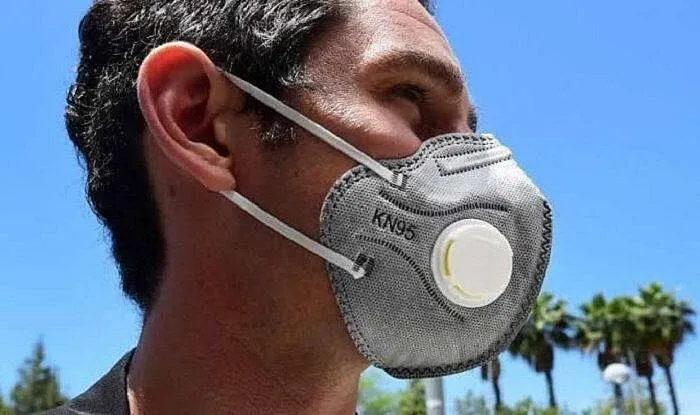
Essential PPE in the Food Industry: What You Need to Know
Overwhelmed by PPE options for food safety? Master your PPE selection for food workers safety with these practical tips.

Get 20€ off on your first order!
Disposable respirators, often referred to as dust masks or particulate respirators, are essential for protecting against airborne hazards in various industries. If you are navigating the world of personal protective equipment (PPE), understanding EN 149 and FFP ratings is crucial to selecting the right breathing protection.This guide simplifies these standards, helping you make informed decisions.
For a broader overview, start with our parent article, Disposable Respirators: Selecting The Right Breathing Protection.
EN 149 is the European standard that governs the performance requirements of filtering facepiece respirators (FFRs). These respirators are categorized into FFP1, FFP2, and FFP3 based on their filtration efficiency and the level of protection they provide against particulate hazards.
Established by the European Committee for Standardization (CEN), EN 149 ensures that respirators meet stringent requirements for safety and effectiveness. Compliance is verified through a series of rigorous tests, including:
These classifications help ensure that workers and individuals have access to respirators suited to their specific needs. Whether you’re in construction, healthcare, or manufacturing, understanding these ratings is critical to selecting the correct PPE.
The FFP (Filtering Facepiece Particles) classification is divided into three levels:
| FFP Rating | Filtration Efficiency | Maximum Total Inward Leakage | Applications |
| FFP1 | At least 80% | 22% | Protects against non-toxic dusts (e.g., cement, limestone). |
| FFP2 | At least 94% | 8% | Suitable for moderate toxicity particles (e.g., silica dust). |
| FFP3 | At least 99% | 2% | Provides comprehensive protection against challenging particles, such as asbestos and pathogens. |
Each level corresponds to specific industrial or medical environments. For example, FFP2 respirators are often used during outbreaks of infectious diseases, while FFP3 respirators are essential in environments with hazardous materials.
The type of FFP-rated respirator you need depends on the level of contact with contaminants and Adapted to suit various environmental needs and airborne risks:
By selecting the right rating, you ensure not only compliance with European standards but also the health and safety of workers.

Respirators adhering to EN 149 standards must meet specific performance criteria:
These criteria are tested under controlled laboratory conditions, simulating real-world scenarios. For example, filtration efficiency tests involve challenging the mask with a standardized aerosol and measuring the particles that penetrate. Similarly, breathing resistance is evaluated by simulating airflow rates experienced during moderate and heavy workloads.
Always look for the CE marking and the FFP classification when purchasing disposable respirators. To browse a range of compliant products, visit our Disposable Respirators category.
For additional resources on selecting and understanding respirators, check out:
When selecting a respirator, consider:
For a deeper dive into selection tips, revisit our comprehensive buying guide: Disposable Respirators: Selecting The Right Breathing Protection.
We hope this guide has helped clarify the key factors in selecting the right disposable respirator, from understanding EN 149 and FFP ratings to knowing which respirator suits your specific needs. Whether you’re working in construction, healthcare, or any other industry, we’re here to support your safety and ensure you choose the best protection for your environment.
For more detailed insights, explore related articles such as How To Choose The Right Full Mask Respirators – A Buyer’s Guide. To shop certified products, visit our Disposable Respirators category today.
If you have any questions or need assistance in selecting the right respirator, feel free to reach out—we’re always here to help and ensure you make an informed, confident choice.
– The Droppe Team
FFP ratings (EN 149) are European standards, while N95 is a US standard. Both indicate the level of filtration, but the specific tests and requirements differ.
No, disposable respirators are designed for single-use only. Reusing them can compromise their effectiveness.
Ensure a snug fit by adjusting the straps and performing a fit check. A proper seal should prevent air from leaking around the edges.
No, FFP respirators are designed for particulate protection. For gases or vapors, use respirators with appropriate chemical cartridges.
Disposable respirators are intended for short-term use, typically for a single work shift or until they are damaged or soiled.
Thank you! You've signed up for our newsletter.



















Overwhelmed by PPE options for food safety? Master your PPE selection for food workers safety with these practical tips.

Struggling to maintain clear vision in demanding environments? This guide is here to help. By the end, you’ll know exactly...

Electricians across Europe face unique challenges that require reliable safety glasses to ensure both protection and efficiency. Whether safeguarding against...

Overwhelmed by PPE options for food safety? Master your PPE selection for food workers safety with these practical tips.

Struggling to maintain clear vision in demanding environments? This guide is here to help. By the end, you’ll know exactly...

Electricians across Europe face unique challenges that require reliable safety glasses to ensure both protection and efficiency. Whether safeguarding against...
Get 20€ off on your first order!
Save 30% by buying directly from brands, and get an extra 10€ off orders over €100
Save 30% by buying directly form brands, and get an extra 10€ off orders over €100